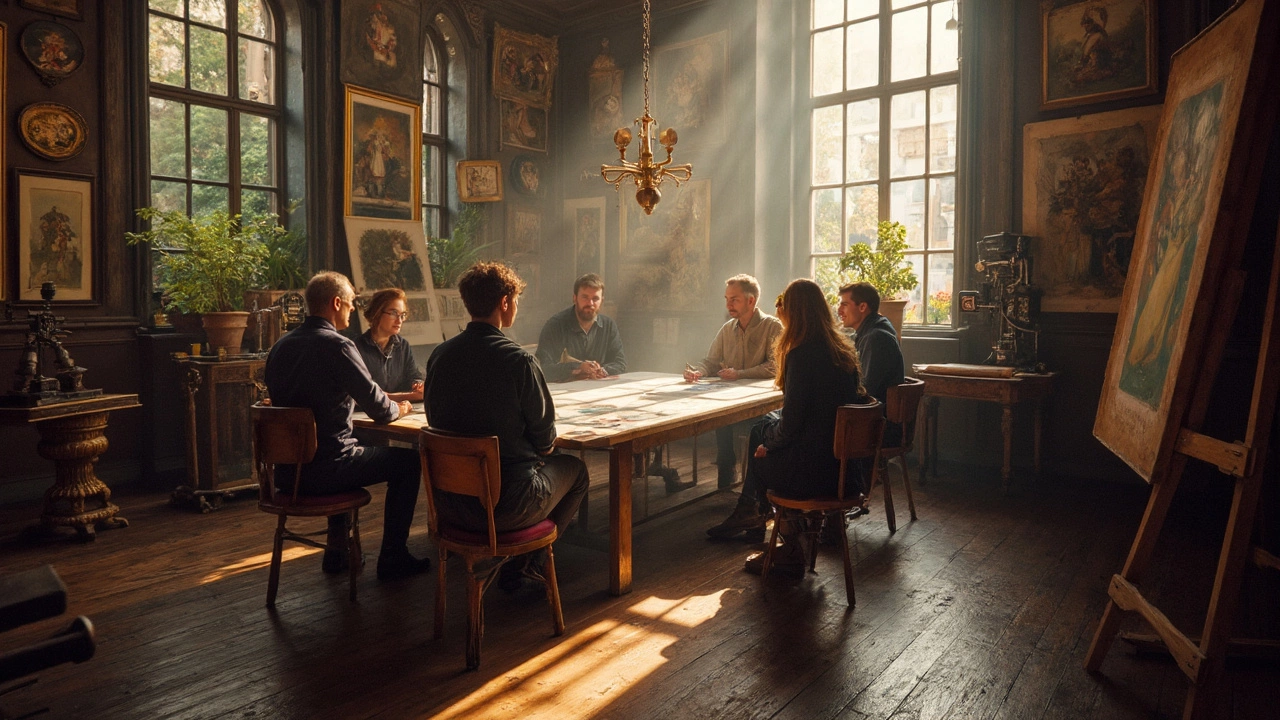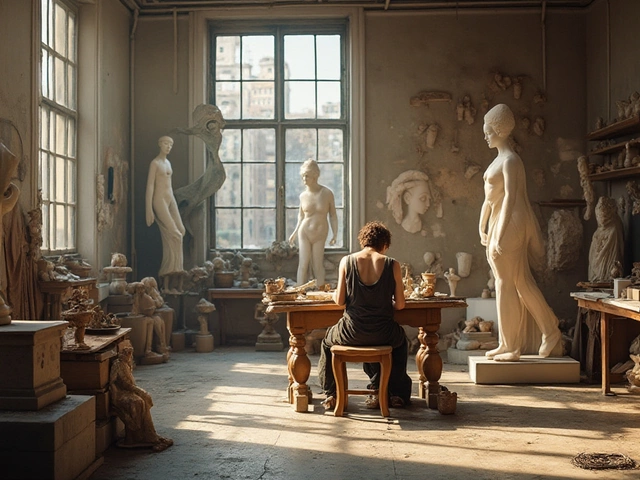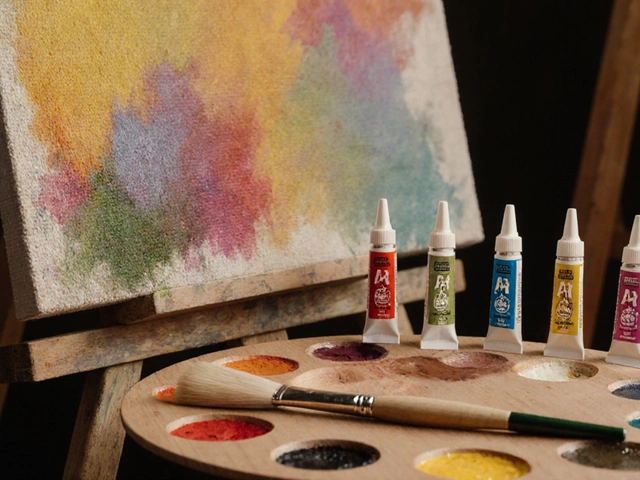Ever wonder what sets apart a Master of Fine Arts in photography from other photographers? It’s not just about taking pretty pictures—it's about crafting visual stories that resonate deeply with people. An MFA in Fine Art Photography is a degree that immerses you in both the theory and practice of photography, emphasizing the artistic rather than the commercial aspects.
The journey towards earning an MFA isn't just about honing technical skills but also about expanding your creative horizons. You'll dive into different techniques and perspectives, pushing the boundaries of what photography can convey. Whether you're interested in capturing the mundane with a fresh lens or exploring bold conceptual projects, an MFA provides a platform to develop a distinct voice.
If you're considering this path, think about what aspects of photography truly excite you. Are you drawn to storytelling, social issues, or pure aesthetics? Pinpointing your interests can guide you towards a program that aligns with your goals and artistic vision.
- What is an MFA in Fine Art Photography?
- The Artistic Journey: Skills and Techniques
- Choosing the Right Program
- Careers and Opportunities
- Practical Tips for Aspiring Photographers
What is an MFA in Fine Art Photography?
So, you're thinking about diving into the world of fine art photography? Getting a Master of Fine Arts, or MFA, could be just the ticket to elevate your craft. This isn't just any degree; it's all about blending creativity with technical prowess to produce photos that tell compelling stories or make viewers feel something profound.
The Core of an MFA
An MFA in Fine Art Photography offers an in-depth study of both historical and contemporary photographic practices. It’s where art meets academia. Students embark on a journey to refine their technique and, more importantly, find their unique voice as artists. This isn't about snapping commercial shots for quick sales; it's about exploring concepts and pushing boundaries.
Course Components
The curriculum usually covers a blend of studio practices, art history, and critical theory. Classes are often hands-on with lots of focus on self-directed projects. Some common topics include:
- Advanced photographic techniques and processes
- Digital imaging and production
- Concept development and execution
- Fine art theory and critique
Thesis and Exhibition
One of the standout parts of an MFA program is the thesis project—often a large body of work that culminates in an exhibition. It's a chance to showcase your talent, drawing on everything you've learned to make a statement through your photography. Think of it as your one big shot to let the art world see what you’re made of.
If you're serious about pursuing a career in photography, particularly in academia or the fine arts, an MFA could be a significant stepping stone. Not only does it help develop your artistic skills, but it also expands your network with mentors and peers who can help you along your career path.
The Artistic Journey: Skills and Techniques
Diving into an MFA in Fine Art Photography means immersing yourself in a world where creativity meets technical prowess. This journey is all about developing a unique voice while mastering the tools of the trade. You’ll be playing with cameras, lighting, editing software, and even alternative processes that might seem a bit old-school but can add extraordinary depth to your work.
Technical Skills
Let's talk tech. Your journey will start with understanding your gear. From DSLR and mirrorless cameras to the more niche film setups, you'll learn how to manipulate exposure, composition, and depth of field to create a compelling image. Mastery here gives you the foundation to break rules creatively later on.
Editing software like Adobe Lightroom and Photoshop aren't just for 'fixing' mistakes—they're part of your creative toolkit. During your MFA, you’ll dive deep into these programs, learning how to enhance your visual storytelling. This involves everything from simple color corrections to complex digital manipulations.
Creative Techniques
Beyond the tech, it’s about experimenting. You’ll explore genres—documentary, portrait, landscape, conceptual, and more. Studio work often forms a big part of the curriculum, where you can test out different lighting setups, backdrops, and props, honing the ability to shape a narrative or evoke emotion through your work.
Don’t forget about alternative processes! These can include cyanotype, tintype, or even creating photo books. Not only do they expand your toolkit, but they also give you fresh perspectives on the tradition of photography as an art form.
Feedback and Critiques
One crucial part of the MFA experience is learning through feedback. You’ll present your work in critiques, receiving input from peers and mentors. These sessions help refine your style and technique, offering insights that you wouldn’t get working solo.
| Technique | Description |
|---|---|
| DSLR/Mirrorless Mastery | Understanding camera settings and capabilities |
| Adobe Suite Proficiency | Advanced skills in Lightroom and Photoshop |
| Alternative Processes | Exploration of non-digital techniques like cyanotype |
Combining all these skills and insights makes you not just a better photographer but also a sharper artist. The goal is to see the world differently and capture it in ways that might challenge, provoke, or inspire others.
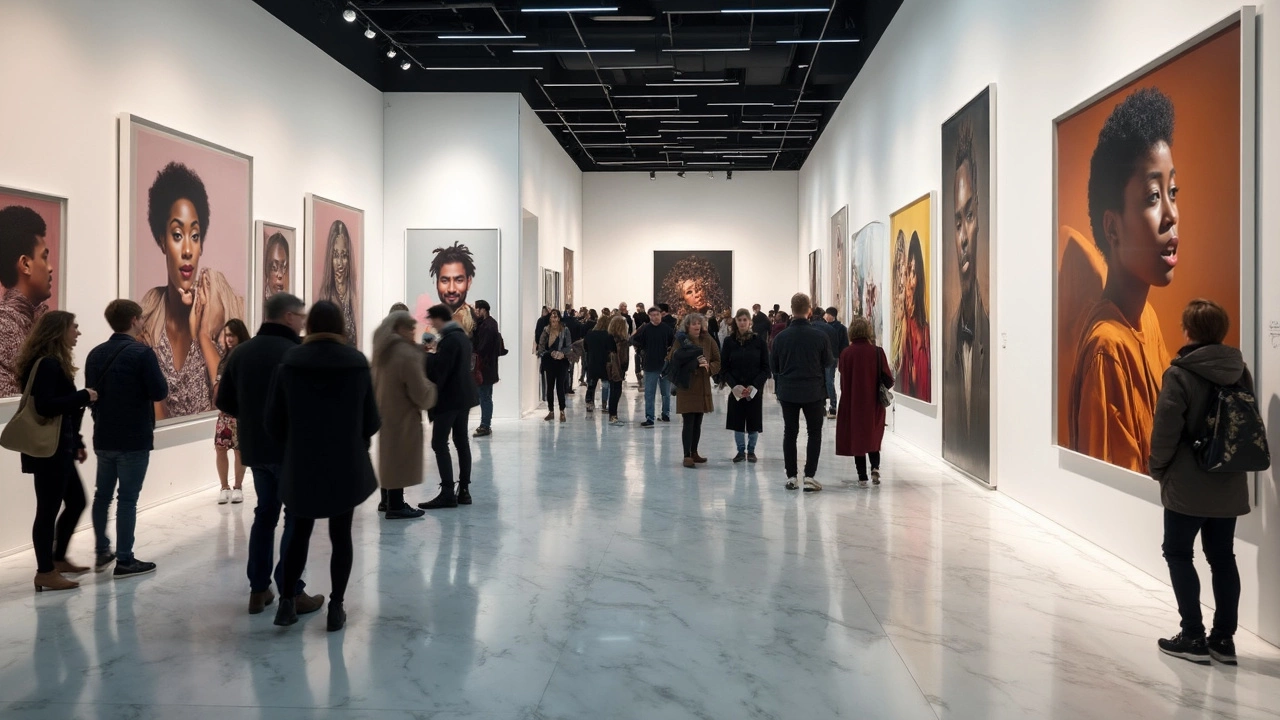
Choosing the Right Program
Picking the right MFA in Fine Art Photography program can feel a bit like sorting through a mountain of glossy brochures and endless websites. But fear not; it's all about finding the right fit for your unique artistic journey. Here’s what to consider.
Understand Your Goals
First things first: What are you hoping to get out of your degree? Are you seeking the freedom to explore abstract concepts, or do you need strong guidance through a rigorous curriculum? Identifying your goals will guide you towards programs that align with your aspirations.
Research Faculty Expertise
The faculty can make or break your experience. Look for programs where professors share your interests or who push boundaries in ways you admire. Studying under artists actively engaged in the field can offer invaluable insights and mentorship.
Program Structure
MFA programs vary widely in structure and focus. Do you prefer studio-based classes or a more theoretical, lecture-focused approach? Some programs offer hands-on workshops while others emphasize critical theory and writing. Find what works best for your learning style.
Check Resources and Facilities
State-of-the-art resources can significantly enhance your learning experience. A school with well-equipped studios, darkrooms, and digital labs will provide you with the tools to experiment and refine your craft.
| University | Reputation | Facilities |
|---|---|---|
| School of Visual Arts | Top Tier | Excellent Studios |
| Yale University | Renowned | Comprehensive Labs |
| ArtCenter College of Design | Highly Regarded | Innovative Workshops |
Consider Location and Community
Location isn’t just about geography; it's about cultural fit too. Do you thrive in bustling urban landscapes, or do you prefer a quieter, more contemplative environment? Being part of a community that inspires you can make all the difference.
Financial Considerations
Finally, keep an eye on cost. Scholarships, assistantships, and financial aid can ease the burden, so be sure to explore these options. Remember, an MFA is an investment in your future as an artist.
Choosing the right program is crucial to nurturing your growth in fine art photography. Take the time to visit campuses, talk to current students, and envision yourself in each setting. The right program will not only enhance your skills but also inspire your artistic journey.
Careers and Opportunities
Getting an MFA in Fine Art Photography opens a lot of doors, even beyond traditional photography roles. This degree isn’t just about becoming a photographer—it sets you up for a range of exciting possibilities in fields you might not even consider at first.
Teaching and Academia
One popular path for MFA graduates is teaching. With your knowledge and expertise, you can inspire the next generation of artists at universities and art schools. It’s a rewarding way to share your passion and foster new talent while often continuing personal projects. Plus, having an MFA gives you the academic credentials many institutions look for.
Exhibition and Gallery Work
If showcasing your work is what you're aiming for, getting your photography into galleries is a big opportunity. Fine art photography is highly valued in art communities globally, and an MFA can help you network and navigate the gallery scene. From solo exhibitions to art fairs, there’s plenty of space to make a name for yourself.
Commercial and Editorial Photography
Believe it or not, an MFA can give you a competitive edge in commercial and editorial photography too. With your refined skills, you can take on roles in fashion, advertising, or even work with magazines. The degree signals to potential clients and employers that you bring a thoughtful artistic perspective to your work.
Curatorial and Museum Work
For those interested in the history and presentation of photographic art, curatorial roles in museums and galleries can be a great fit. It's about storytelling through other artists' works and contributing to how art is accessed by the public. An MFA provides a deep understanding of both the art and its societal impacts, which is crucial in curatorial practices.
Freelancing and Entrepreneurship
Fancy being your own boss? Many MFA grads find success freelancing or starting their own photography business. With a degree in fine art photography, you bring a unique, marketable perspective. From setting up personal studios to offering workshops, the entrepreneurial route lets you shape your career your way.
Here's a quick look at some potential careers compared by their average incomes:
| Career Path | Average Income |
|---|---|
| Teaching (University Level) | $60,000 - $90,000 |
| Gallery Exhibited Artist | Varies greatly by sales |
| Commercial Photographer | $40,000 - $80,000 |
| Curator | $50,000 - $75,000 |
| Freelance Photographer | $30,000 - $70,000 |
Remember, an MFA isn’t just a degree; it’s your ticket to explore creative flexibility across industries. Whatever path you choose, your skills will make an impact.
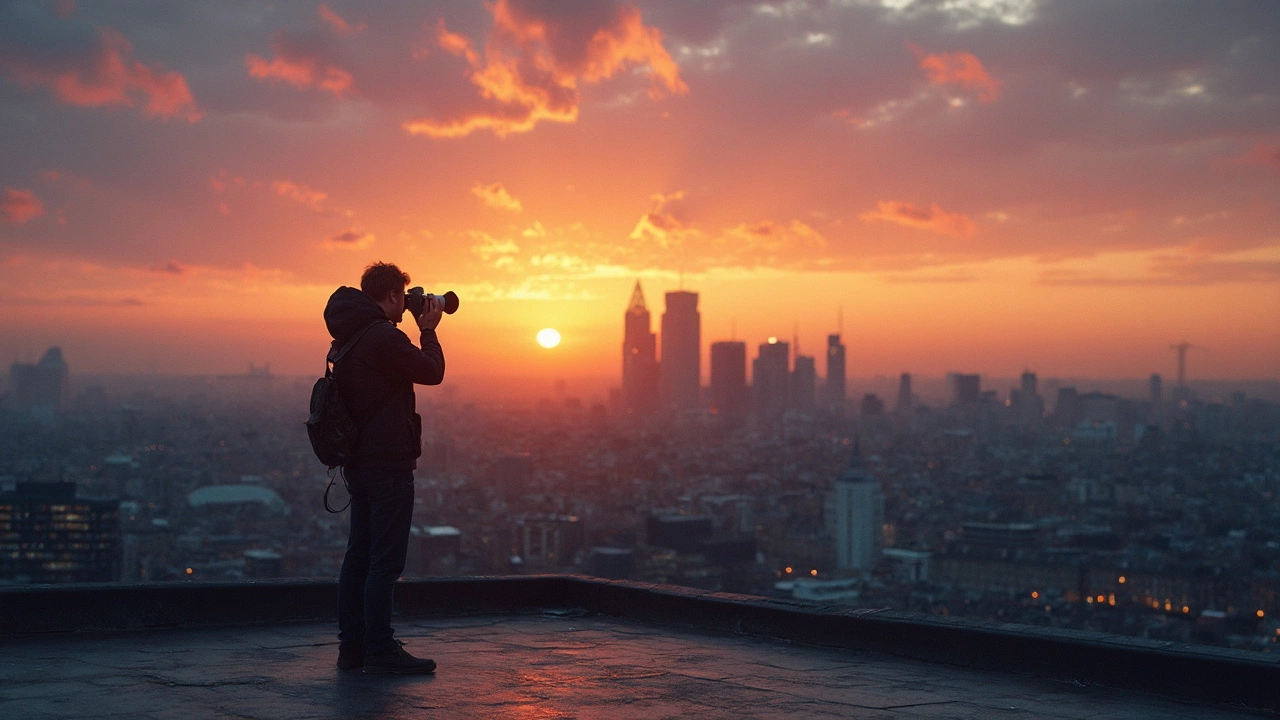
Practical Tips for Aspiring Photographers
So, you’ve got the passion and you’re thinking about diving into the world of fine art photography. Awesome choice! But how do you turn that passion into something more? Here are some practical tips to help you along your journey.
Find Your Unique Style
First things first, figure out what makes your work different. Your style is your signature, and developing it can set you apart in a sea of shots. Spend time experimenting with different subjects, lighting, and perspectives to find what truly clicks with you (pun totally intended).
Build a Strong Portfolio
Your portfolio is your calling card in the art world. Include a variety of work that showcases your ability and range within photography. Don’t just toss in every photo you’ve taken; be selective. Let your portfolio tell a cohesive story.
Network and Collaborate
Photography is as much about people as it is about pictures. Attend exhibitions, join photography clubs, or hop on social media platforms where you can connect with other photographers. Collaborations can spark new ideas and open doors to unexpected opportunities.
Seek Feedback
Don’t shy away from getting feedback—and no, your mom doesn’t count (unless she’s a pro!). Critiques from fellow photographers or mentors can offer fresh perspectives and push your work to the next level. Just remember, it’s all an opportunity to learn and grow.
Stay Updated with Technology
Technology is constantly evolving. New cameras, apps, and editing software can enhance your work in incredible ways. Stay up-to-date with the latest trends and tools that can refine your fine art photography skills.
Consider an MFA Program
If you’re serious about taking your photography to professional heights, consider investing in an MFA program. It’s a big commitment but offers intensive training and exposure to a network of artists and opportunities.
These tips are steps in your photography journey. Embrace the process, keep learning, and most importantly, keep shooting. It’s not just about the destination; it's about the beautiful visuals you create along the way.
